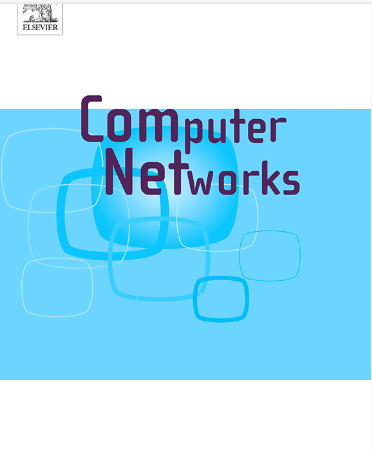Memory-efficient programmable packet parsing for multi-tenant terabit networks
IF 4.4
2区 计算机科学
Q1 COMPUTER SCIENCE, HARDWARE & ARCHITECTURE
引用次数: 0
Abstract
Programmable data plane architectures such as RMT and dRMT obtain great attention due to their flexibility in processing packets on demand without modifying the switch chip design. Unfortunately, the packet parser, as a crucial component, suffers from low processing performance and large logic usage. Existing programmable packet parser design utilizes a Finite State Machine (FSM) to parse the packet header vector (PHV) in a loop manner, or enumerates all possible protocol paths to extract the packet header vector in parallel, which leads to low throughput or significant consumption of T-CAM resources.
This paper proposes the partition parser (PParser), a novel programmable parser design, working in multi-tenant networks, that makes the best trade-offs between the parsing performance and the resource usage as far as we are concerned. To maximize the performance, PParser initiates the protocol path analysis in compile-time and parses packets in parallel using T-CAM. To avoid the path explosion without reducing performance, PParser efficiently partitions the parsing graph into sub-graphs and leverages a multi-stage T-CAM for cascade parsing. The performance, flexibility, and resource usage of PParser are excessively evaluated using real-world protocols on the FPGA prototype. The result shows that PParser achieves 3.98 throughput compared with the FSM-based parser and 87% compression rate and a similar throughput compared with HyperParser.
多租户太比特网络的内存高效可编程数据包解析
可编程数据平面架构(如 RMT 和 dRMT)因其在不修改交换芯片设计的情况下按需处理数据包的灵活性而备受关注。遗憾的是,数据包解析器作为一个重要组件,存在处理性能低、逻辑用量大等问题。现有的可编程数据包解析器设计利用有限状态机(FSM)以循环方式解析数据包头向量(PHV),或枚举所有可能的协议路径来并行提取数据包头向量,从而导致吞吐量低或大量消耗 T-CAM 资源。本文提出的分区解析器(PParser)是一种新颖的可编程解析器设计,可在多租户网络中工作,在解析性能和资源使用之间做出最佳权衡。为了最大限度地提高性能,PParser 在编译时启动协议路径分析,并使用 T-CAM 并行解析数据包。为了在不降低性能的情况下避免路径爆炸,PParser 将解析图有效地分割成子图,并利用多级 T-CAM 进行级联解析。在 FPGA 原型上使用实际协议对 PParser 的性能、灵活性和资源使用情况进行了过度评估。结果表明,与基于 FSM 的解析器相比,PParser 的吞吐量提高了 3.98 倍,压缩率提高了 87%,与 HyperParser 的吞吐量相近。
本文章由计算机程序翻译,如有差异,请以英文原文为准。
求助全文
约1分钟内获得全文
求助全文
来源期刊

Computer Networks
工程技术-电信学
CiteScore
10.80
自引率
3.60%
发文量
434
审稿时长
8.6 months
期刊介绍:
Computer Networks is an international, archival journal providing a publication vehicle for complete coverage of all topics of interest to those involved in the computer communications networking area. The audience includes researchers, managers and operators of networks as well as designers and implementors. The Editorial Board will consider any material for publication that is of interest to those groups.
 求助内容:
求助内容: 应助结果提醒方式:
应助结果提醒方式:


